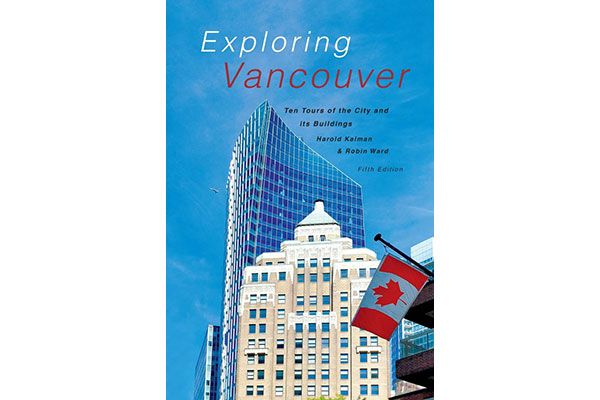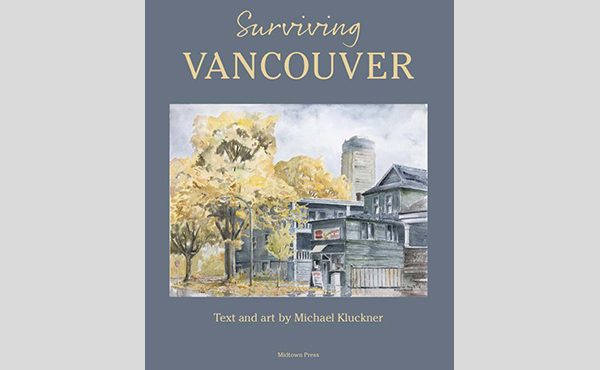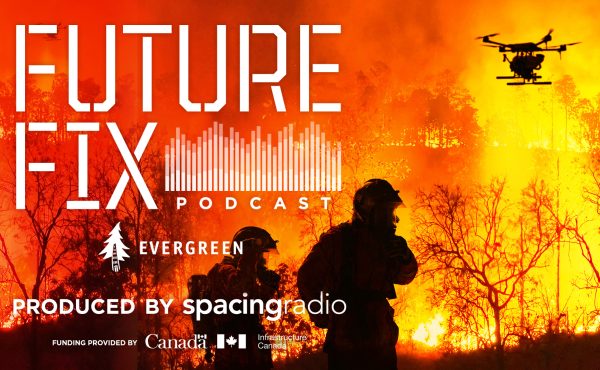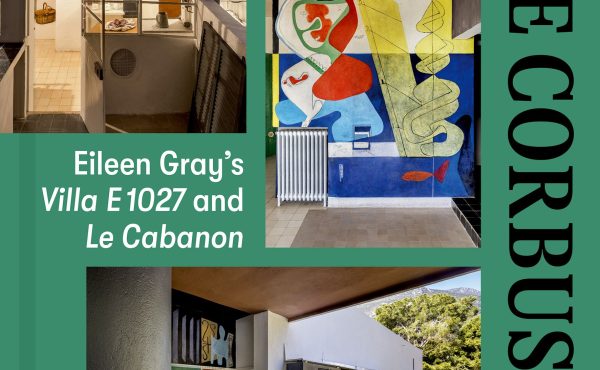
Written by Harold Kalman & Robin Ward, Fifth Edition (Harbour Publishing, 2023)
This fifth edition of Exploring Vancouver brings the city’s architectural and social story entirely up to date. Ten tours highlight significant buildings from all eras of the city and its metro region, including new projects that are transforming the skyline more radically than ever before. Harold Kalman and Robin Ward, both longtime chroniclers of Vancouver in evolution, describe the city’s extraordinary urban environment, its buildings, monuments and landscapes. This highly readable text explains how the city was created, by whom and why, including the important roles of Musqueam, Squamish, and Tsleil-Waututh Nations in the narrative.
- From the book’s preface
Evidently, a lot can happen in ten years, which is the time since Harold “Hal” Kalman and Robin Ward last updated their popular Exploring Vancouver—a now longstanding institution in Metro Vancouver that has been published nearly every decade since 1974. Having four of the five editions in my library, it is remarkable to look at this new book in comparison to that early black and white edition from almost fifty years ago (which I bought from MacLeods Books, a second-hand bookseller close to Victory Square in Vancouver). What is clear is that past decade has seen an astonishing amount of new entries to the book, from a plethora of new residential high-rises by an international cache of architects, to several new buildings at UBC along with new developments by local First Nations.
It is this last entry in particular that the book’s authors call out in their introduction to this edition. With Vancouver’s pledge to Truth and Reconciliation in 2014, this is the first edition that is able to call out some grievous histories that have been perpetuated since the founding of the city—that the downtown peninsula was not “empty land” as the land commissioner of the CPR declared and had immortalized on the downtown corner of the street named after him. As clearly noted on the first page of this book’s introduction: “The land was not ’empty’ – First Nations had been here for millennia.”
For this reason, the book no longer begins with Gastown accompanied by a picture of Gassy Jack’s statue in Maple Tree Square as had been the case in 2012. Instead, this new edition now puts False Creek at the start, as the book’s authors have chosen the time since Expo ’86 as the event to frame the book’s narrative and nearly four hundred buildings. The introduction is perhaps one of the most comprehensive histories of planning in Vancouver and its region to-date, even more than Frances Bula‘s recent introduction to Larry Beasley’s Vancouverism, specifically because this new edition followed the release of the controversial Broadway Plan. The authors have been documenting the city’s history since the sale of the Expo lands in 1987 when Vancouver planner Ray Spaxman and City Council worked with the developer and local constituents to create what would become one of North America’s most vibrant, walkable communities.
From CityPlan to EcoDensity, from Vancouverism to the new Broadway Plan, Vancouver has seen seismic shifts in its planning sensibilities, and these two have been chronicling the landscape along the way—from the new communities growing up in Olympic Village (now just the Village) to the bustling campus in the False Creek Flats where Emily Carr University has made its new home. As well, since the 2012 edition of Exploring Vancouver, there have been a tremendous amount of new buildings constructed at UBC, including Tallwood by Acton Ostry Architects, which at the time of its construction in 2017 was the tallest hybrid mass timber building in the world.
Other new buildings at UBC include the Nest by DIALOG and B+H Architects, along with Formline’s Indian Residential School and History and Dialogue Centre, a new aquatic centre by MJMA and Acton Ostry Architects, a biodiversity museum and research center by the Patkaus, and a pharmaceutical sciences building by Saucier + Perrotte with HCMA…and the list goes on with an additional ten pages in the UBC chapter. The next edition will also have to provide an update on the recent seismic upgrades to the Museum of Anthropology, the great masterwork by Arthur Erickson which anchors the west side of the campus.
By presenting False Creek as the starting point for the book, the usual suspects of Gastown, Chinatown, and Strathcona are able to follow next without much ado, with the downtown CBD and West End still rounding out the book’s core framework as it has for close to five decades. As a past architectural walking tour guide for the AIBC who led variations of these six walks, I have been watching the transformation of the downtown and environs with interest since the late nineties and was very curious to see which recent buildings the authors would be able to include at the time of the book’s publishing (Vancouver House, Butterfly, Alberni, Vancouver Art Gallery).
By combining some of the chapters from the previous edition (Gastown and Chinatown), the authors have been able to reduce the previous fourteen walks to ten, though the tenth walk in the book (Tour J) would require a car as it covers a wide area geographically, including Surrey, Richmond, New Westminster, Port Moody, and Burnaby. This section in itself is a substantial addition to the book, as it now provides for several new buildings atop Mount Burnaby at SFU, along with a number of buildings in Surrey’s growing civic precinct, including its new main library by Revery (Surrey didn’t even make it into the 2012 edition of the book).
As a resident of New Westminster, I appreciated the inclusion of the Anvil Centre by HCMA and MCM, along with the new Sapperton District adjacent to the Royal Columbian Hospital, an often overlooked TOD in the Metro Vancouver region. Like its older cousin at New Westminster Station, Sapperton will be home to four new residential towers at its build out and has turned the area into a vibrant, walkable community. Likewise, the area around New Westminster Station is also about to grow as several new residential towers will shortly be completed nearby, including one which is set to be one of the tallest residential towers in all of Metro Vancouver.
The Expo Line like the story of False Creek similarly provides for the book’s narrative thread, as its expansion to include the Millennium, Evergreen, and Canada Lines has allowed for Metro Vancouver to remain a fifteen-minute city. The new Broadway Line is also mentioned several times in the fifth edition, certainly as the Broadway Plan is being enabled by it. As the book’s authors make abundantly clear in the book’s introduction, this new plan will potentially affect some 500 blocks along the Broadway corridor, currently home to twenty-five percent of the city’s rental housing stock. Given the recent lessons from the past, they recommend caution in implementing the plan’s rollout. Perhaps the game changer here will be the arrival of Indigenous development at the Heather and Jericho lands, along with the Squamish nation’s Senakw which has already broken ground at the southern foot of the Burrard Street Bridge.
This more than anything else is what Hal and Robin have noted as the most unprecedented result of Truth and Reconciliation: “…unforeseen by CityPlan and EcoDensity (or previous editions of this book) is that First Nations would assert their rights and initiate development. Will these initiatives shift the dynamics of real estate development in Vancouver? They will certainly test the sincerity of the City’s 2014 pledge of reconciliation.”
Until the results of these new developments can be documented in a future edition of the book, the fifth edition of Exploring Vancouver has updated its narrative to one about moving into the future together by building upon the lessons of our past, which along with the spirit of Expo ’86 will continue to propel this city forward into a place in which we can all call home.
***
For more information on Exploring Vancouver, go to the Harbour Publishing website.
***
Sean Ruthen is a Metro Vancouver-based architect.





One comment
Hi Sean,
Thank you so much for your positive and perceptive review of the new edition of Exploring Vancouver.
Cheers
Robin